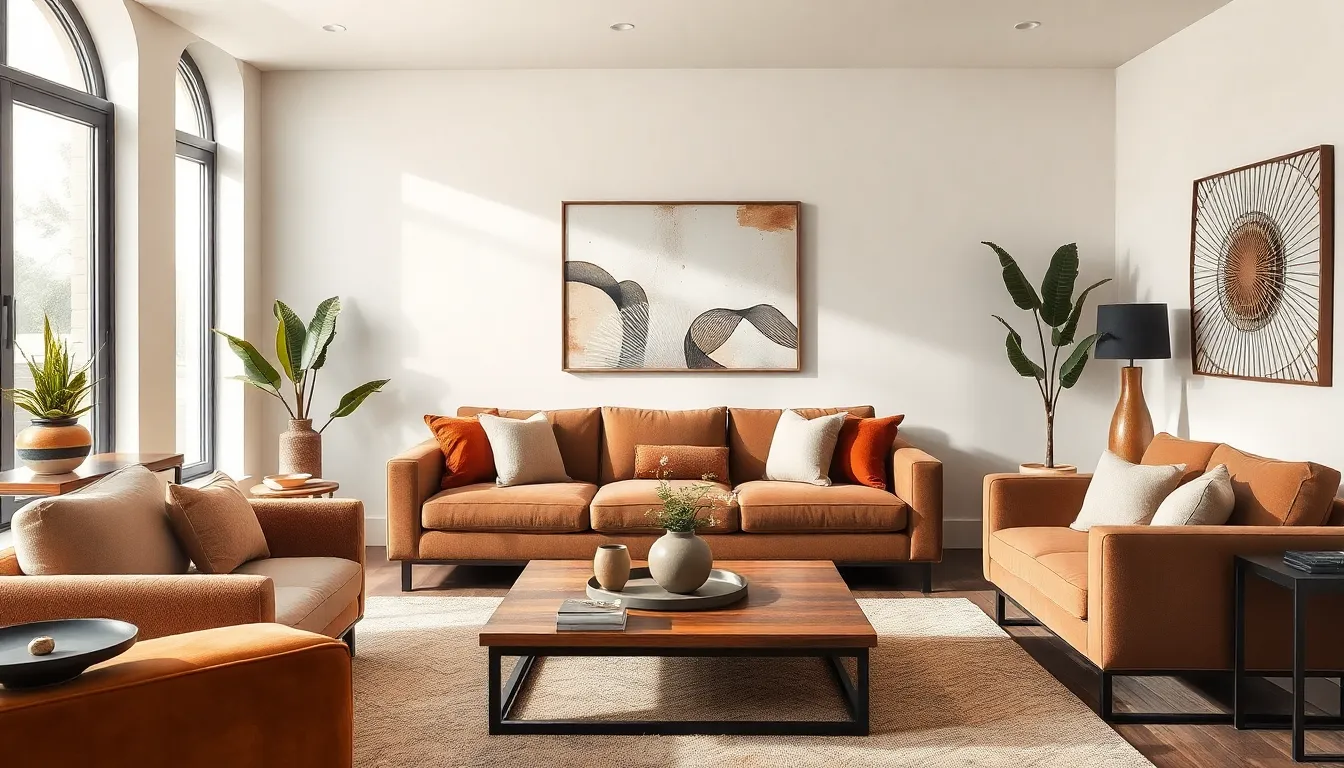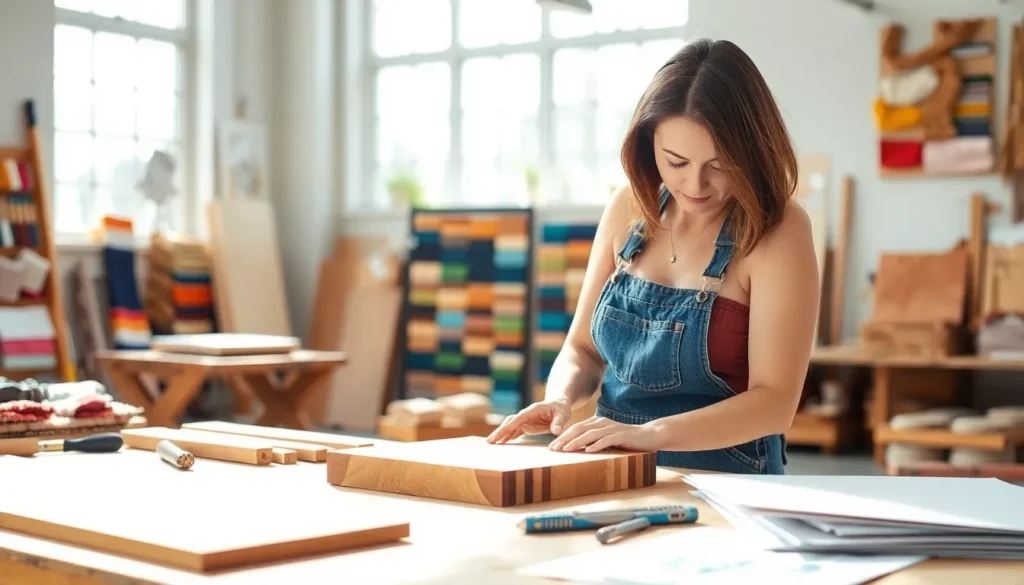In a world where bland walls and uninspired spaces reign supreme, decor design construction swoops in like a superhero armed with paintbrushes and power tools. It’s not just about slapping on a fresh coat of paint; it’s about transforming ordinary spaces into extraordinary experiences. Whether it’s a cozy living room that feels more like a hug or a kitchen that inspires culinary masterpieces, the right decor can make all the difference.
Imagine walking into a room that not only looks stunning but also reflects your unique style. With the right design and construction, that dream can become a reality. From innovative layouts to eye-catching finishes, the possibilities are endless. So buckle up and get ready to dive into the exciting world of decor design construction, where creativity meets craftsmanship and every project is an adventure waiting to unfold.
Table of Contents
ToggleOverview of Decor Design Construction
Decor design construction represents an essential part of interior development. This process integrates functionality and aesthetics in various spaces. Transforming a simple area into an inspiring environment requires attention to detail. Creativity fuels the design, allowing for innovative layouts that reflect individual preferences.
Craftsmanship plays a vital role in ensuring quality construction. Skilled artisans contribute to unique finishes that elevate overall design. Combining materials such as wood, metal, and textiles enhances visual appeal and durability. Designers often incorporate sustainable practices to promote eco-friendly choices in decor.
Customization illustrates the versatility offered in decor design construction. Homeowners can tailor options according to their needs, ensuring personalized outcomes. Specific themes, like minimalism or bohemian styles, guide the choice of elements and colors. Transitioning from one theme to another often relies on selecting complementary decor items.
Functionality remains a key aspect, particularly in spaces like kitchens and bathrooms. Organized layouts facilitate efficient use of space, catering to daily activities. Smart storage solutions can subtly blend with the decor, maintaining a cohesive aesthetic. Incorporating lighting effectively highlights features while creating ambiance.
Collaboration between designers and clients fosters successful projects. Clear communication and understanding of vision result in transformed spaces that inspire and delight. Continual trends in decor design construction invite exploration, making it a dynamic and evolving discipline. Each project, big or small, contributes to the broader narrative of enhancing living environments.
Key Elements of Decor Design

Effective decor design hinges on several vital elements that contribute to a cohesive and inviting atmosphere. Color schemes, textures, and materials form the foundation of any successful decor project.
Color Schemes
Colors influence mood and perception. Different colors evoke various emotions, and selecting the right palette can significantly impact a space. Neutral tones promote calmness while bold hues create energy. A harmonious color scheme integrates well with furniture and accents. Additionally, homeowners often choose color combinations that reflect personal style, enhancing the overall aesthetic. Proper balance between contrasting colors can highlight features while maintaining a unified look.
Textures and Materials
Textures add depth and interest to a space. Combining materials like wood, metal, glass, and textile creates visual variety. Each texture contributes unique qualities, enhancing the tactile experience. Natural materials inspire warmth, while polished surfaces introduce elegance. Choosing the right textures enhances both durability and functionality. Layering materials enriches the environment, offering a dynamic appeal. Attention to detail in these aspects ensures that a design feels both sophisticated and inviting.
The Process of Decor Design Construction
The process of decor design construction involves several distinct phases that ensure efficiency and creativity in transforming spaces. Each phase plays a crucial role in defining the overall outcome of a project.
Initial Consultation and Planning
Initial consultation sets the foundation for a successful decor design project. During this meeting, designers gather insights from clients regarding their preferences and requirements. Information about lifestyle, functional needs, and style preferences guides the planning process. Designers then create mood boards and preliminary sketches to visualize ideas. Collaboration fosters clear communication, aligning visions between the designer and client. Timelines and budgets are also discussed, establishing realistic expectations. Proper planning ensures that all elements are thoughtfully considered before moving forward.
Execution and Implementation
Execution follows meticulous planning, bringing designs to life. Skilled artisans take charge of construction, carefully executing each detail. Quality materials are sourced to enhance durability and visual appeal, with attention to integrating textures and colors. Ongoing communication keeps clients informed about progress and any adjustments needed. Installations, whether fixtures, furniture, or finishes, occur in a systematic manner. Final touches ensure that the design meets client satisfaction and adheres to the original vision. This phase leads to a transformed environment that reflects both style and functionality.
Trends in Decor Design Construction
Innovative trends continue to shape decor design construction, emphasizing a balance between aesthetics and functionality.
Sustainable Design Practices
Sustainable design practices focus on eco-friendliness, utilizing materials with low environmental impact. Reclaimed wood, bamboo, and recycled metals contribute significantly to this trend. Biodegradable textiles enhance living spaces while reducing waste. Energy-efficient lighting systems also play a critical role, helping to lower utility costs. Incorporating plants improves air quality, creating healthier environments. Many designers prioritize local sourcing to minimize carbon footprints and support community artisans. Sustainable practices not only improve aesthetics but also elevate the overall well-being of the inhabitants.
Technology Integration
Technology integration transforms decor design construction in significant ways. Smart home systems automate lighting and heating, enhancing comfort and energy efficiency. Virtual reality tools allow clients to visualize spaces before implementation, streamlining decision-making processes. 3D printing technology enables customized fixtures and furniture, offering unique solutions for various design styles. Designers increasingly use augmented reality apps to assist in color selection and placement of decor items. As technology continues to evolve, creativity remains limitless, paving the way for future innovations in design.
Decor design construction plays a vital role in shaping environments that reflect personal style while ensuring functionality. By blending creativity with skilled craftsmanship, it transforms ordinary spaces into extraordinary experiences. The emphasis on customization allows homeowners to create unique atmospheres tailored to their preferences.
Sustainable practices and innovative technologies are reshaping the landscape of decor design. As trends evolve, the focus remains on creating inviting spaces that promote well-being and efficiency. With ongoing collaboration between designers and clients, the potential for inspiring transformations is limitless. Embracing these elements will undoubtedly lead to more enriching and sustainable living environments.



